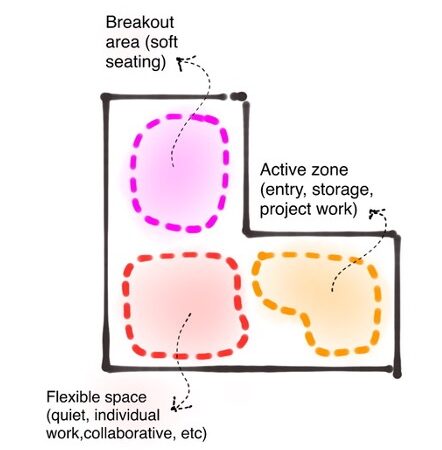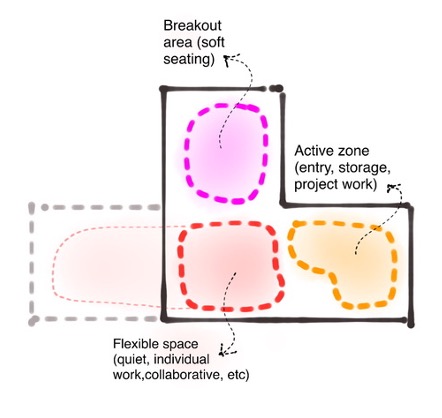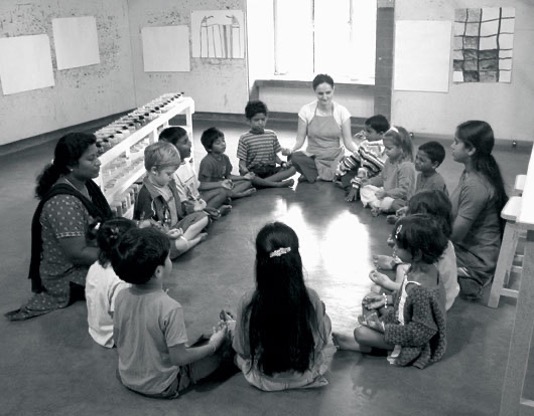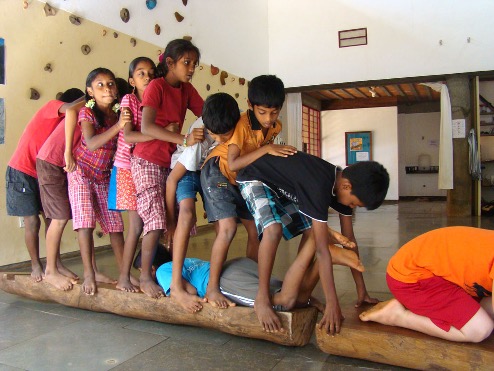Ideal Learning Environment
The school has to encourage holistic development of the mental, physical and emotional abilities of a child. With this approach, the school can ensure the integrated development of every child.
Designing spaces that encourage such development is critical. Learning in classrooms and exploring the world outside classrooms should be vital to the planning and designing of the schools.
Classroom is a representation through which school teaches children to understand their role in the world, the most visible symbol of an educational philosophy. Therefore classroom design is definitely an integral part of designing school. ‘L’ shaped or ‘T’ shaped classrooms allow both formal and informal education with child centred philosophy as opposed to rectangular conventional classrooms. ‘L’ or ‘T’ shaped classrooms (see sketch below) as a design pattern offers teachers options in how they might organise their classrooms to facilitate the development of their students in various learning activities.

‘L’ shaped

‘T’ shaped
Other supportive spaces such as library, auditorium, sports ground contribute to the learning of a child and hence should be designed very sensitively.
Children are great discoverers of spaces. Schools should focus on creating spaces that can encourage other activities such as arts and craft, painting and pottery, carpentry, agriculture and farming, exhibition spaces, theatre spaces and so on.
The school design should also try to integrate sustainable practices as much as possible. This too is an active way of educating children, where they would see services and practices make a change in the environment. This teaches children that it’s important to minimise the negative impact of buildings on the environment by efficient and moderate use of materials, energy and resources
It can be very impactful on young minds to use systems like rain-water-harvesting, solar panels to generate energy, segregation of waste and waste water treatment to reuse water in gardening or flushing.
The students, teachers and parents play a salient role in the design of the school building. The school building design assists, influences, teaches and structures the thoughts of students in the school program.

’play of painting’ at kindergarten school
Schools should provide spaces for activities with special programs similar to what Auroville has with ‘play of painting’ and ‘awareness through body’.

‘Awareness through body’ for 5th to 8th grades at transition school
Schools should develop or conduct activities which are not just art or therapy but activities that prevent the need for therapy, that stimulate the capacities that allow individuals to realise themselves, that enhances the ability for self awareness and self regulation, that assists children to better know the complexity of their own being and find ways to manage this complexity more effectively.
The goal should be to create a learning environment that meets at the crossroads of innovative design and educational programs.